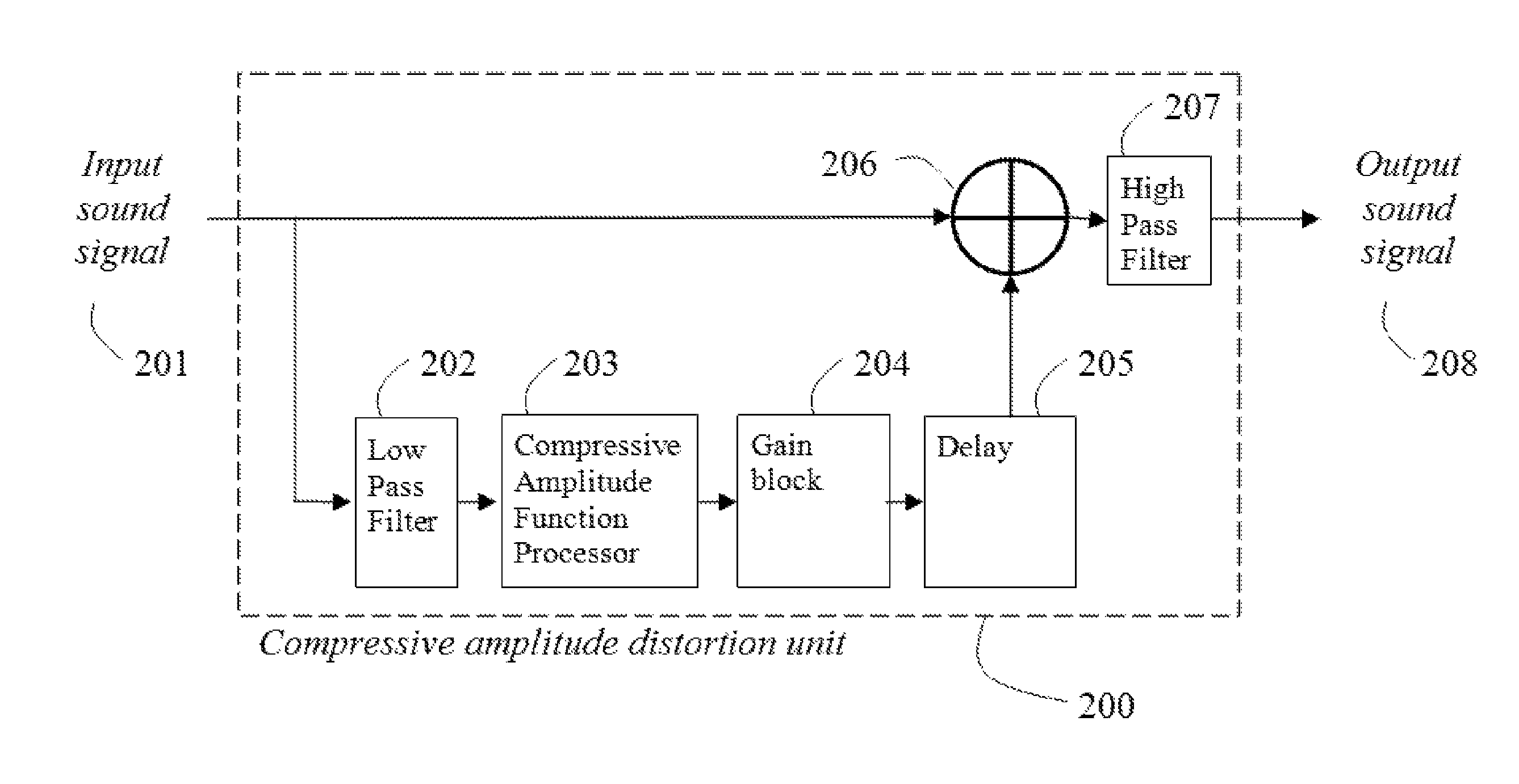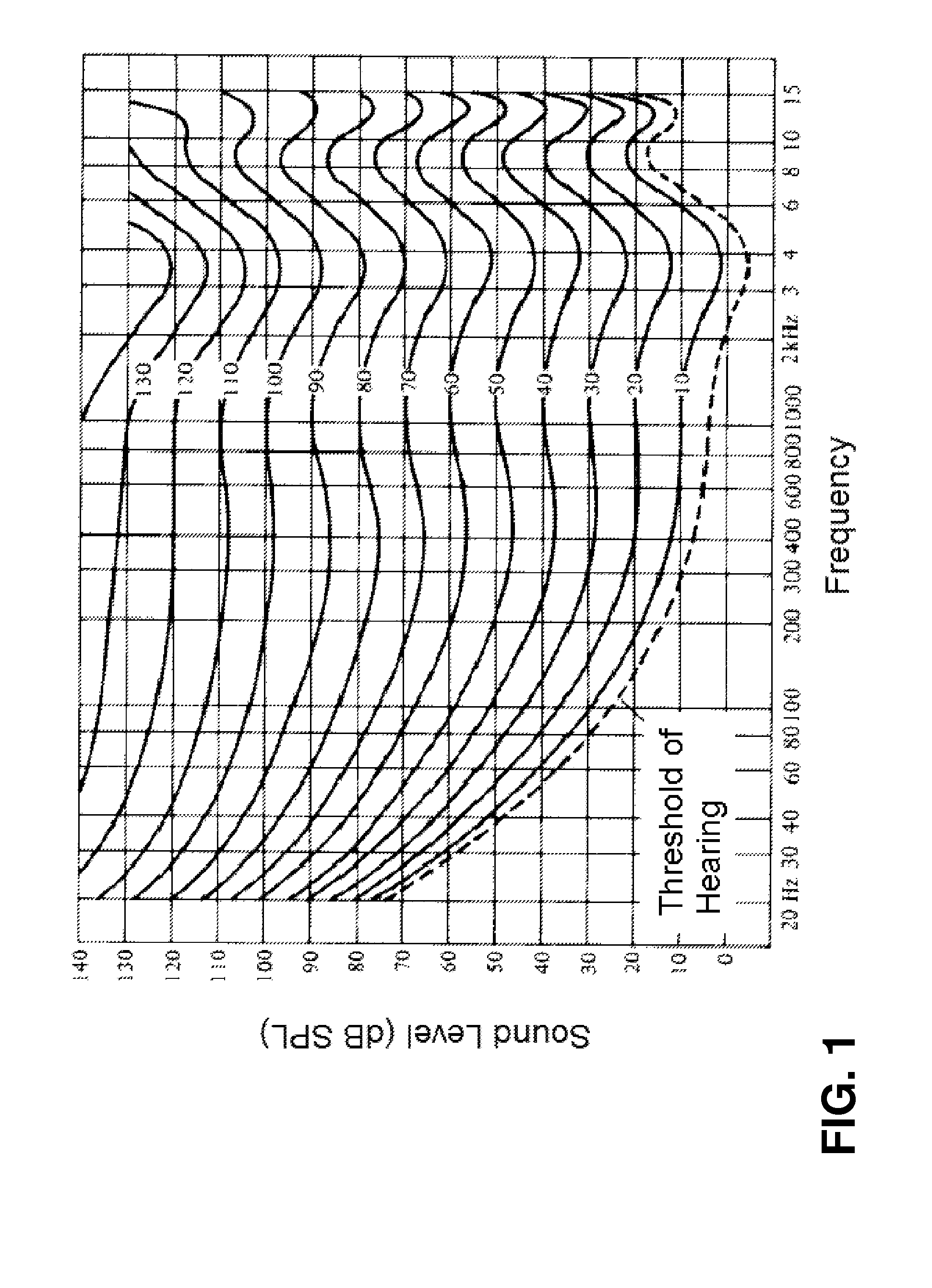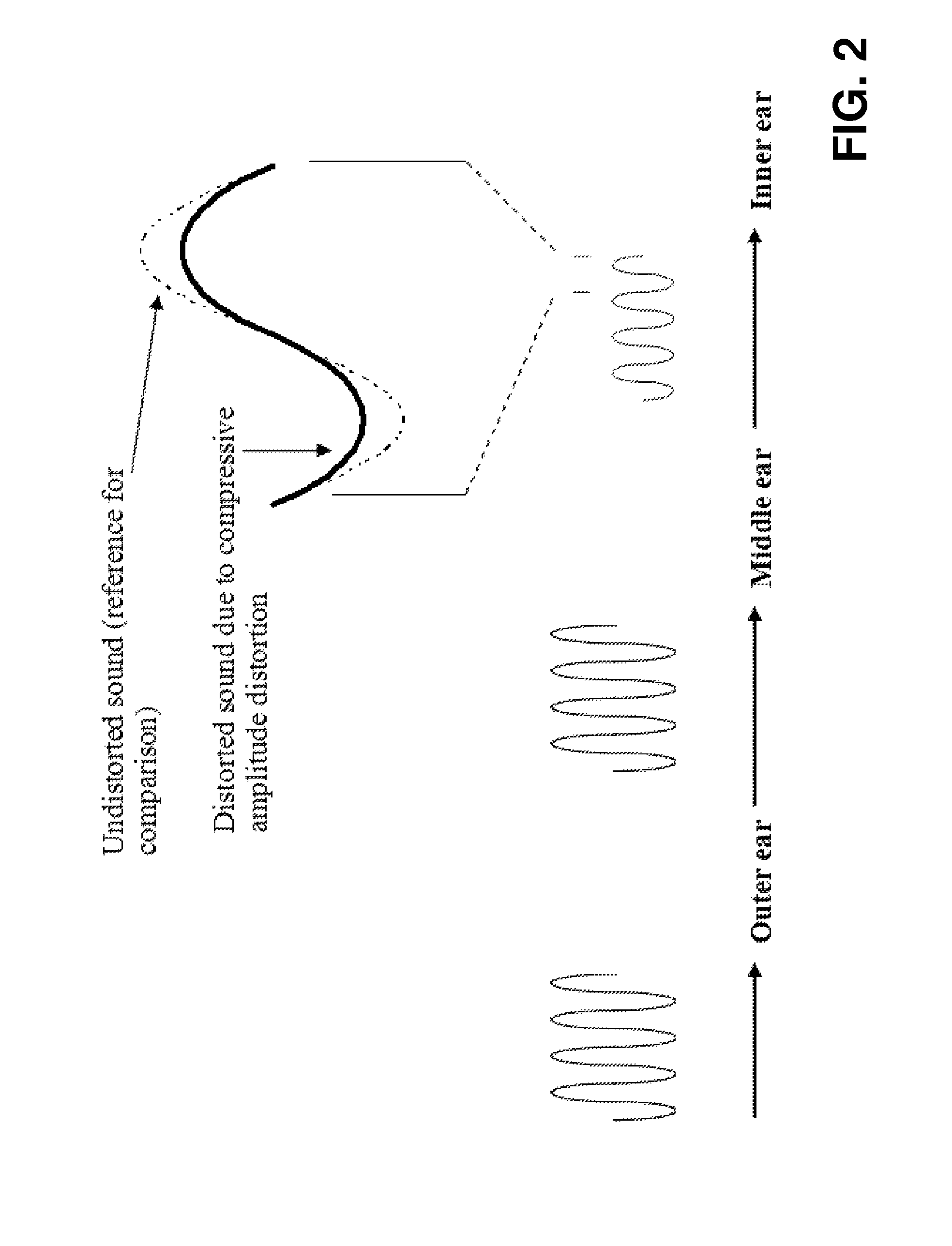Perception enhancement for low-frequency sound components
a low-frequency sound and component technology, applied in the field of sound signal processing, can solve the problems of difficult to meet the requirements of good low-frequency reproduction in small churches or in general applications, poor music reproduction quality, physical limitations of electro-acoustic transducers, etc., and achieve the effect of enhancing the perceptibility of the low-frequency portion
- Summary
- Abstract
- Description
- Claims
- Application Information
AI Technical Summary
Benefits of technology
Problems solved by technology
Method used
Image
Examples
Embodiment Construction
[0022]Human ears can judge the amplitude of the input sound pressure level (SPL). FIG. 1 is a graph showing the equal loudness contours versus frequency. Each contour indicates equal perceived loudness against a reference loudness level at 1 kHz. FIG. 1 demonstrates that a nonlinear response is present at both ends of the audible frequency band. The high frequency band from 1 kHz to 15 kHz shows a much higher consistency in the shift of the pressure level as the pressure level increases. The shift is quite independent of the pressure level in the high frequency range and the equal-loudness contour only varies within a + / −10 dB region, except in the cases of 110 dB and 120 dB. However, for the low frequency band from 20 Hz to 300 Hz, FIG. 1 indicates that human ears are quite inefficient in responding to low frequency as the required SPL is 10 dB at 1 kHz but increases to 78 dB at 20 Hz (68 dB difference). Nevertheless, the situation is better at a high loudness level. For example, a...
PUM
 Login to View More
Login to View More Abstract
Description
Claims
Application Information
 Login to View More
Login to View More - R&D
- Intellectual Property
- Life Sciences
- Materials
- Tech Scout
- Unparalleled Data Quality
- Higher Quality Content
- 60% Fewer Hallucinations
Browse by: Latest US Patents, China's latest patents, Technical Efficacy Thesaurus, Application Domain, Technology Topic, Popular Technical Reports.
© 2025 PatSnap. All rights reserved.Legal|Privacy policy|Modern Slavery Act Transparency Statement|Sitemap|About US| Contact US: help@patsnap.com



